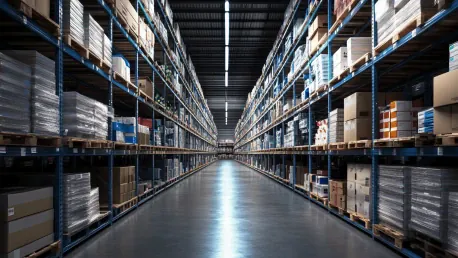Retail optimization is transforming the way businesses operate, enhancing efficiency, and driving sales growth. As the retail landscape grows increasingly complex with the integration of physical stores, e-commerce, and social media, businesses must adopt modern strategies to stay competitive. Retailers face numerous challenges such as high costs, inventory management issues, and customer dissatisfaction. However, leveraging data-driven strategies and technology can streamline operations and improve customer experiences. This article explores how retail optimization can address these challenges.
The Importance of Retail Optimization
Retail optimization is crucial for businesses aiming to maximize efficiency and profitability in a competitive market. This strategy involves leveraging data analytics and technology to enhance various aspects of retail operations, including inventory management, customer experience, and sales strategies. By optimizing these areas, retailers can ensure that they meet consumer demands more effectively, reduce waste, and improve overall business performance.
Retail optimization aims to enhance efficiency and increase profitability through the use of data and technology. By refining various aspects of operations, businesses can reduce costs, make informed decisions, and drive sales. Key components of retail optimization include analytics, automation, and integrated systems. These tools help create seamless and efficient retail operations that benefit both the retailer and the customer. Analytics provides valuable insights into customer behavior, sales trends, and operational performance, enabling retailers to make data-driven decisions. Automation streamlines processes such as inventory management, pricing, and order fulfillment, reducing manual errors and saving valuable time. Integrated systems ensure that data flows seamlessly across different aspects of the business, providing a unified view of operations.
A well-optimized retail operation not only enhances efficiency but also improves the overall customer experience. By leveraging data and technology, retailers can personalize their offerings, streamline the shopping journey, and deliver a consistent experience across all touchpoints. This leads to higher customer satisfaction, increased loyalty, and ultimately, higher sales. In today’s competitive market, where customers have high expectations and numerous choices, retail optimization is no longer a luxury but a necessity. Retailers who fail to optimize their operations risk losing customers to more agile and customer-centric competitors.
Unified Data Foundation
A unified data foundation is essential for effective retail optimization. Disconnected systems and siloed data can lead to incomplete insights and operational inefficiencies. By centralizing data from different sources, retailers can gain a comprehensive view of their operations, customers, and inventory. This not only enhances decision-making but also enables better forecasting and planning. A centralized data system ensures that all departments have access to up-to-date and accurate information, reducing discrepancies and improving collaboration. For instance, sales data from both online and offline channels can be consolidated into a single platform, providing a holistic view of customer interactions and preferences. This allows retailers to tailor their marketing efforts, optimize inventory levels, and streamline order fulfillment processes.
Moreover, a unified data foundation enables retailers to provide a seamless shopping experience across all channels. By integrating customer data from various touchpoints, retailers can offer personalized recommendations, targeted promotions, and a consistent experience whether customers are shopping online, in-store, or through social media. This level of personalization not only enhances customer satisfaction but also drives repeat sales and brand loyalty. Retailers who successfully implement a unified data foundation can transform their business, not only by improving operational efficiency but also by delivering a superior customer experience.
Robust Technology Infrastructure
Managing sales, inventory, and customer relationships across multiple channels requires a strong technology infrastructure. Crucial tools include a point-of-sale system, inventory control, CRM platform, ERP integration, and analytics tools. These tools sync transactions, track stock levels, store customer data, connect financial management, and analyze trends. This robust infrastructure supports data-driven decision-making and streamlines operations. A point-of-sale (POS) system, integrated with other sales channels, provides real-time visibility into transactions and inventory levels. This ensures that stock levels are accurate and up-to-date, preventing issues such as overstocking or stockouts. An effective POS system also enables seamless order fulfillment, allowing customers to purchase online and pick up in-store or vice versa.
Inventory control systems are essential for maintaining optimal stock levels and managing multiple locations. These systems track inventory movement, automate reorder processes, and provide insights into stock performance. By leveraging inventory control systems, retailers can reduce carrying costs, improve order accuracy, and enhance customer satisfaction by ensuring that products are always available when needed. In addition to inventory control, a robust technology infrastructure includes a customer relationship management (CRM) platform that stores and analyzes customer data. A CRM system enables retailers to segment their customer base, personalize marketing efforts, and track customer interactions. This not only improves customer engagement but also drives sales by targeting the right customers with the right offers at the right time.
Optimizing Sales Channels
Retail optimization involves connecting every touchpoint to create a unified shopping experience. Physical store layout and operations should be strategically arranged to engage shoppers and optimize store flow. Digital storefronts must focus on enhancing site speed, simplifying navigation, and using high-quality images and descriptions. Omnichannel integration ensures flexible fulfillment options and centralized inventory tracking. Physical stores play a crucial role in the retail ecosystem, and optimizing their layout can significantly impact sales. By strategically arranging displays, product placements, and store flow, retailers can guide customers through a seamless shopping journey. Interactive elements, such as touchscreens and product demonstrations, can further engage shoppers and enhance their experience. A well-designed store layout not only attracts customers but also encourages them to spend more time and money in-store.
Digital storefronts, on the other hand, must provide a smooth and user-friendly experience. This includes fast loading times, easy navigation, and high-quality product images and descriptions. Optimizing the digital storefront involves continuous testing and improvements to ensure that customers can find what they are looking for quickly and easily. Additionally, features like live chat support, product recommendations, and customer reviews can enhance the online shopping experience and drive conversions. Omnichannel integration is essential for providing a seamless shopping experience across all channels. This involves connecting online, offline, and mobile channels to provide flexible fulfillment options, such as buy online, pick up in-store (BOPIS) or ship-to-home. Centralized inventory tracking ensures that stock levels are accurate across all channels, preventing issues such as overselling or stockouts. By optimizing sales channels, retailers can meet the evolving needs of customers and stay competitive in the market.
Mobile and Social Commerce
As mobile and social commerce continue to grow, optimizing these channels is critical. Mobile checkouts should be streamlined, and social shopping features should be integrated to drive conversions. Targeted promotions on mobile and social platforms can further enhance sales and customer engagement, leading to increased revenue and a better overall shopping experience. Mobile commerce has become a significant part of the retail landscape, with more customers using their smartphones to browse and purchase products. To optimize mobile commerce, retailers should focus on creating a mobile-friendly website with a responsive design that adapts to various screen sizes. Streamlined checkout processes, such as one-click purchasing and mobile wallet integration, can reduce cart abandonment rates and improve conversion rates.
Moreover, social commerce is gaining traction as customers increasingly use social media platforms to discover and buy products. Retailers should leverage social media to showcase their products, engage with customers, and drive sales. Integrating shopping features directly into social media platforms, such as Instagram Shopping or Facebook Marketplace, allows customers to purchase products without leaving the app. Additionally, social media can be used to run targeted promotions, influencer marketing campaigns, and user-generated content to boost brand visibility and engagement. By optimizing mobile and social commerce, retailers can tap into new revenue streams and provide customers with convenient and engaging shopping experiences. This not only drives sales but also builds brand loyalty as customers appreciate the seamless and personalized interactions with the brand across different channels.
Achieving Operational Excellence
Operational excellence involves creating systems and processes that consistently deliver value while minimizing waste. Investing in staff productivity, training programs, and effective tools is essential. Supply chain efficiency can be improved through inventory tracking automation, demand forecasting, and optimized warehouse workflows. Syncing data across channels also helps streamline operations.
Staff productivity is a crucial aspect of operational excellence. Retailers should invest in training programs to equip employees with the skills and knowledge needed to perform their tasks efficiently. Effective tools, such as POS systems and inventory management software, can also enhance staff productivity by reducing manual tasks and providing real-time access to information. Performance data can be used to identify areas for improvement and provide targeted coaching to employees.
Supply chain efficiency is another critical component of operational excellence. Automating inventory tracking and demand forecasting can help retailers maintain optimal stock levels and reduce carrying costs. Optimized warehouse workflows, such as efficient picking and packing processes, can speed up order fulfillment and reduce delivery times. Additionally, syncing data across channels ensures that all departments have access to accurate and up-to-date information, improving decision-making and collaboration. By focusing on operational excellence, retailers can reduce costs, improve efficiency, and deliver a consistent and high-quality customer experience. This not only drives sales but also enhances customer satisfaction and loyalty.
Cost Management Strategies
Effective cost management strategies are critical for ensuring the financial health and competitiveness of a business. By identifying cost-saving opportunities and implementing efficient budgeting practices, companies can maximize their resources while maintaining quality standards. This involves analyzing expenses, negotiating with suppliers for better deals, streamlining operations, and investing in technology that enhances productivity. Additionally, fostering a culture of cost-consciousness among employees can contribute to sustained financial discipline and innovation.
Effective cost management is a critical aspect of retail optimization. Identifying cost-saving opportunities through spending pattern analysis and negotiating better supplier terms can reduce operational inefficiencies. Retailers can further reduce costs by optimizing supply chain processes and using technology to automate and streamline operations. Cost management involves analyzing spending patterns to identify areas where costs can be reduced. This includes negotiating better terms with suppliers, optimizing inventory levels to reduce carrying costs, and implementing cost-saving measures such as energy-efficient lighting and waste reduction programs. By carefully managing costs, retailers can improve their bottom line and invest in other areas of the business, such as marketing or technology.
Optimizing supply chain processes is another effective cost management strategy. Automating and streamlining supply chain operations, such as inventory management and order fulfillment, can reduce labor costs and improve efficiency. Using technology to track and analyze supply chain performance can also highlight areas for improvement and identify potential cost savings. Additionally, partnering with reliable suppliers and logistics providers can help ensure that products are delivered on time and at a lower cost. By implementing effective cost management strategies, retailers can improve profitability and compete more effectively in the market. This not only enhances financial performance but also provides the flexibility to invest in growth opportunities and innovation.
Retail Optimization Case Studies
Several successful retail brands offer inspiring examples of optimization. For instance, Venus Et Fleur used a unified platform to centralize inventory and improve customer data integration, leading to higher order value and sales growth. Venus Et Fleur faced challenges with managing inventory and customer data as they expanded from an ecommerce-only business to physical retail. By integrating multiple sales channels onto a unified platform, they were able to centralize inventory tracking, reduce checkout abandonment, and improve upselling opportunities. This led to increased ecommerce order value and higher spending by their Shop App customers, enabling them to continue scaling their business while delivering a luxury shopping experience.
BYLT Basics balanced inventory across locations, resulting in profitable store openings and increased product sales. The consolidation of solutions strengthened their omnichannel approach, enhancing the shopping experience. By connecting inventory across stores and online, BYLT Basics achieved significant growth and opened seven profitable stores in under a year. Significant contributions from their mobile app and a substantial increase in women’s product sales further demonstrated the success of their retail optimization efforts. The time-saving consolidation of solutions also supported their omnichannel approach, providing a smooth and integrated shopping experience for their customers.
Real-World Benefits
Allbirds maximized inventory efficiency by allowing physical locations to fulfill online orders, reducing warehouse shipments, and improving website conversions. Employees also increased productivity by fulfilling online orders during downtime. By using a unified platform to connect online and in-store sales, Allbirds was able to optimize inventory levels and reduce the need for warehouse shipments. This not only improved website conversion rates by making retail inventory available online, but also increased in-store employee productivity. Employees were able to fulfill online orders during periods of low foot traffic, ensuring that resources were used efficiently and customers received their orders promptly.
Mizzen+Main integrated Shopify POS to connect online and in-store sales, access customer purchase history, and manage inventory. This improved order fulfillment and built stronger customer relationships. By leveraging the features of Shopify POS, Mizzen+Main created a seamless shopping experience for customers, whether shopping online or in-store. Access to customer purchase history allowed staff to provide personalized service and recommendations, enhancing the overall shopping experience. Real-time inventory management ensured that stock levels were accurate and orders were fulfilled promptly, leading to higher customer satisfaction and loyalty.
Essential Retail Optimization Tools
Retailers today need to leverage various tools to streamline operations, enhance customer experience, and ultimately increase profitability. From inventory management systems to customer relationship management (CRM) software, these tools help retailers stay competitive in a rapidly evolving landscape. Advanced analytics provide insights into sales trends, customer preferences, and inventory turnover, enabling better decision-making and strategic planning. Additionally, tools like point-of-sale (POS) systems and e-commerce platforms ensure seamless transactions and integration across multiple sales channels. Implementing these optimization tools is crucial for modern retailers aiming to improve efficiency and drive growth.
Retail optimization tools like Shopify POS provide comprehensive solutions that connect online and in-store sales, manage inventory, store customer profiles, and offer analytics. These tools support flexible shopping options and centralized data management. Shopify POS enables retailers to have visibility and control over their entire retail operation from a single platform. By syncing sales channels, managing inventory in real-time, and storing customer profiles, retailers can ensure accurate data across all touchpoints. The analytics features provide valuable insights into sales trends, customer behavior, and operational performance, supporting data-driven decisions that drive growth and efficiency.
Stocky helps maintain optimal inventory levels with advanced forecasting, purchase order management, stock tracking, and reporting. This enables smarter purchasing decisions and prevents overstocking or stock shortages. By analyzing sales trends and supplier performance, Stocky allows retailers to make informed decisions about purchasing and inventory management. This not only improves profitability but also ensures that customers always find the products they need in stock. Daasity centralizes data across sales channels, offering customer analytics, marketing attribution, and customized reporting. It helps track performance and optimize marketing spend for data-driven decisions. With a comprehensive view of data from different sales channels, Daasity enables retailers to better understand customer behavior and preferences, fine-tune their marketing strategies, and track the return on investment of various campaigns.
Retail crime intelligence platforms like Auror reduce theft and improve store safety with incident reporting, investigative tools, and collaboration with law enforcement. This ensures a secure retail environment. By using technology to track and analyze incidents of theft, Auror helps retailers identify patterns and take proactive measures to prevent loss. Collaboration with law enforcement and access to investigative tools also improve the chances of recovering stolen goods and prosecuting offenders. Revionics provides AI-driven insights to optimize pricing strategies, monitor competitor prices, and plan promotions. These tools help retailers make informed pricing decisions to maximize profitability. By analyzing market conditions, competitor pricing, and customer demand, Revionics enables retailers to develop dynamic pricing strategies that drive sales and improve margins.
Future Considerations
Retail optimization is revolutionizing the way businesses function by enhancing efficiency and boosting sales growth. With the retail world becoming increasingly complex due to the integration of physical stores, e-commerce, and social media, it is crucial for businesses to adopt modern strategies to remain competitive. Retailers face numerous challenges such as high operational costs, inventory management problems, and customer dissatisfaction.
To overcome these challenges, leveraging data-driven strategies and technology is essential. By utilizing advanced analytics and tools, businesses can streamline their operations, refine their inventory management, and enhance the customer experience. This approach helps address high costs by optimizing various aspects of the supply chain and reducing waste.
Moreover, improving inventory management ensures that the right products are available at the right time, minimizing stockouts and overstock situations. This not only drives customer satisfaction but also increases sales. Enhancing the customer experience through personalized services, efficient customer support, and seamless omnichannel integration can lead to higher customer loyalty and repeat business.
In conclusion, retail optimization is vital for modern businesses to navigate the complexities of today’s retail environment. By adopting advanced strategies and leveraging technology, retailers can effectively address their challenges, streamline operations, and ultimately drive growth and success.









